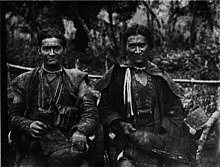.mw-parser-output .hidden-begin{box-sizing:border-box;width:100%;padding:5px;border:none;font-size:95%}.mw-parser-output .hidden-title{font-weight:bold;line-height:1.6;text-align:left}.mw-parser-output .hidden-content{text-align:left}@media all and (max-width:500px){.mw-parser-output .hidden-begin{width:auto!important;clear:none!important;float:none!important))You can help expand this article with text translated from
the corresponding article in Chinese. (October 2014) Click [show] for important translation instructions.
View a machine-translated version of the Chinese article.
Machine translation, like
DeepL or
Google Translate, is a useful starting point for translations, but translators must revise errors as necessary and confirm that the translation is accurate, rather than simply copy-pasting machine-translated text into the English Wikipedia.
Consider
adding a topic to this template: there are already 332 articles in the
main category, and specifying|topic= will aid in categorization.
Do not translate text that appears unreliable or low-quality. If possible, verify the text with references provided in the foreign-language article.
You must provide
copyright attribution in the
edit summary accompanying your translation by providing an
interlanguage link to the source of your translation. A model attribution edit summary is Content in this edit is translated from the existing Chinese Wikipedia article at [[:zh:卡那卡那富族]]; see its history for attribution.
You should also add the template ((Translated|zh|卡那卡那富族)) to the
talk page.
For more guidance, see
Wikipedia:Translation.
The Kanakanavu (Chinese: 卡那卡那富族; Wade–Giles: Kanakanavu) are an indigenous people of central southern Taiwan. They live in the two villages of Manga and Takanua in Namasia District, Kaohsiung City, Taiwan.[2]
History
The native Kanakanavu speakers were Taiwanese aboriginals living on the islands. Following the Dutch Colonial Period in the 17th century, Han-Chinese immigration began to dominate the islands population. The village of Takanua is a village assembled by Japanese rulers to relocate various aboriginal groups in order to establish easier dominion over these groups.[3]
On 26 June 2014, the government recognized Kanakanavu as the 16th group of Taiwanese indigenous peoples.[4]
Livelihood
Japanese occupation left evidence of how the culture functioned. Forest clearance allowed agriculture to be the main facet of society, followed by hunting and fishing. Maize, Rice, Millet, Taro, Sweet Potatoes, beans, and soybeans were the staple crops.[1]
Spirituality
Kanakanavu practiced a polytheistic nature religion involving offerings, fertility rituals, and shamanism. Headhunting was a common practice until Christianization took over.[5]
Clothing
The traditional attire of the Kanakanavu people encompassed a leather hat and vest crafted from furry deer skin, exposing the chest. Over time, increased trade and interactions with other communities prompted a shift to linen and cotton garments, once the privilege of the affluent. The ensemble is complemented by a range of accessories, such as earrings, wrist ornaments, leather shoes, hunting bags, and headdresses, particularly favored by males.
Men from the tribe commonly don a linen-based red corset suspended diagonally from the nape of the neck, featuring a pouch for personal items or tools. Geometric patterns, woven in hues of blue, black, or yellow, adorn the upper section of the corset. The lower body is draped with a rectangular short skirt fashioned from overlapping black cotton layers, secured with a bamboo belt. This belt traditionally accentuates chest muscles, symbolizing prowess in combat or hunting. Signifying social status and achievement, long feathers from eagles and blue-bellied pheasants are integral to their attire, with young males displaying one to four feathers, while elders boast from five to eight.
Traditionally, women's attire comprised leather, evolving with changing techniques and trade dynamics to include cotton, silk, or satin for the affluent and linen for others. The upper body is cloaked in a lengthy short top secured with a tied strap at the back or wrapped around the waist. A vibrant array of colors—red, yellow, blue, black, green, and purple—is intricately embroidered on the collar, front edge, hem, and cuffs of the jacket.
Completing the ensemble is a black long skirt elegantly draped from left to right around the lower body, tied with a belt. This red or green belt was usually made of cotton or silk and decorated with embroidered patterns. Women could also wear accessories such as earrings, neck ornaments, headscarf, hats decorated with colorful garlands or knee pants during events or ceremonies.
